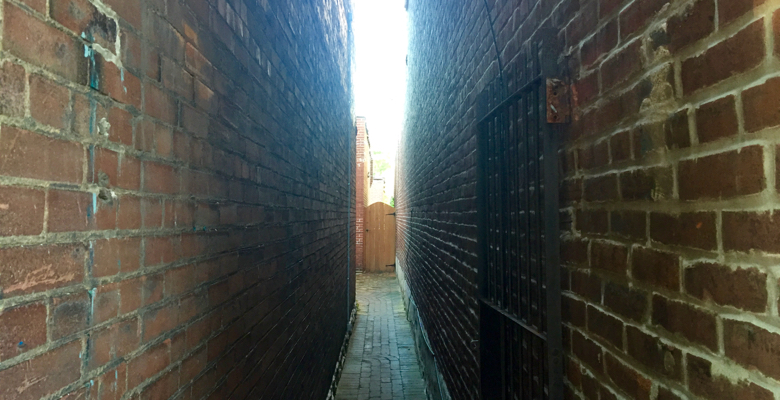Increase Your Creativity With Constraints, Part II

This post is the second in a two-part series on using constraints to improve creativity. Part I is here!
[C]reative people organize their lives according to repetitive, disciplined routines. They think like artists but work like accountants. — David Brooks, in a NY Times Op-ed
I write only when inspiration strikes. Fortunately, it strikes every morning at nine o’clock sharp. — W. Somerset Maugham
There’s a myth in our culture that creativity and time management don’t mix.
Actually, the opposite is true.
Not only do great artists use constraints within their work to enhance creativity, they place constraints on their time for the same reason.
Contrary to public belief, most great creative minds don’t sit around sipping espresso and waiting for the muse. As Mason Currey details in his excellent book Daily Rituals, most highly productive creative types are routine-driven, at least when it comes to their work. They work at certain times, in certain ways, and without ambiguity.
As we did in Tuesday’s post, let’s copy the professionals!
Understanding Parkinson’s Law
I just finished teaching 125 college students about pop music.
As part of my university’s freshman orientation week, I created a 50 minute lecture/discussion/activity about pop music. Over the past two days, I taught five sessions of around 25 students each (from all majors).
We nodded along to “Earth Angel” and rocked out to “Call Me Maybe” (very similar songs, by the way). We dabbled in music theory, sociology, and even songwriting. Students wrote songs in small groups, and some even sat at the piano and performed in front of their peers. All five sessions were a smashing success. I’m over the moon.
The planning was a different story.
I signed up for this project on May 17. It sat on my Next Actions list for 11 weeks, growing more and more complicated in my mind.
On August 5, with my deadline fast approaching, I sat down and planned it out in two hours.
I got snookered by Parkinson’s Law. Perhaps you know it:
Work expands to fill the time available for its completion.
While it turns out that Parkinson was referring to a specific kind of bureaucratic growth within organizations, the law is usually quoted more generally.
We tend to take as much time as possible on projects. Yes, we procrastinate, but we also let projects grow more complex when we have lots of time (whether the project truly needs to be complex or not).
The moral of the story is Don’t give yourself too much time to do things. You will almost always take all the time you allot, so set deadlines and (set them a little early).
Time Constraints Encourage Frequent Creative Sessions
Bach wrote a new cantata nearly every week for four years.
A cantata is a serious piece of music. It’s no 30-second jingle. How can anyone maintain that kind of pace, even Bach?
Here’s a big part of the answer:
He had a time constraint.
He was the musical director at St. Thomas Church in Leipzig, and his employer expected a cantata each week. Though Bach sometimes recycled previous material, he made it happen.
I’m no Bach, but you’re only reading this article because of time constraints. If I didn’t have self-imposed deadlines of Tuesday and Friday evenings, I’d never write anything. I’d be watching fail videos on YouTube and yukking it up, beer in hand.
High quality creative work isn’t primarily the result of talent. It’s the product of lots of time spent doing creative work. It’s therefore more important to develop a habit of frequently doing creative work than it is to do high quality creative work in any single session. Commit to regular short sessions with strict time constraints instead of focusing strictly on quality.
You don’t have to schedule every minute of your day. But schedule frequent sessions of creative time, and treat each session like a meeting with your boss’s boss. No cancelling.
Time Constraints Encourage Depth, Not Breadth
Lastly, constraining your time forces you to decide what’s really important about your project.
When I’m advising a college freshman one-on-one, there are a dozen things to talk about in the short 30 minutes we have together. It’s tempting to try to cover everything, but it just can’t be done. You’re forced to pick and choose.
In each advising session, I try to decide what message the student sitting across from me most needs to hear. Then I focus on delivering that message over and over, consistently and repeatedly.
- For one student, it’s “You can do this.”
- For another, it’s “I’m really glad you’ve made friends, but I’m concerned about your midterm grades. Do you think the fraternity needs to take a back seat to your schoolwork?”
- For another, it’s “This is your life, not your Dad’s.”
- For another, it’s “You are crushing it. Stay the course!”
It’s a challenge to stick to this approach, but boy, is it effective.
Breadth is overrated. Try to do everything, and you do nothing. Depth is where it’s at, and constraining your time encourages you to dive deep.
Doing creative work is an essential part of being human. It’s our birthright.
So create! Start anywhere, and don’t wait.